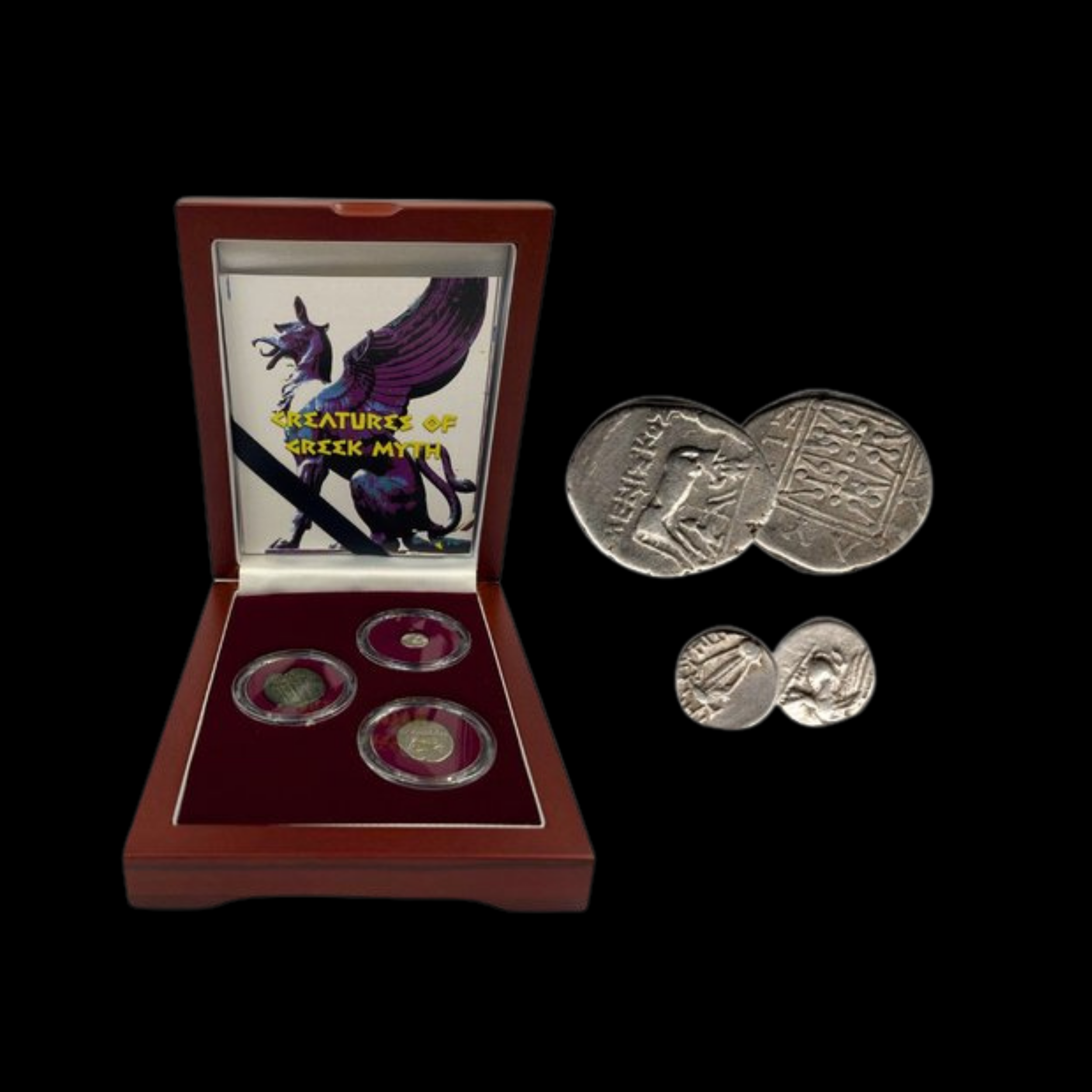 Image 1 of 2
Image 1 of 2

 Image 2 of 2
Image 2 of 2



Tetrobol from Terone (about 2450-2400 years ago)
This small silver coin comes from the ancient Greek city of Terone, located in the Chalcidian peninsula of Macedonia (northern Greece). Produced during the Classical period of Greek history, this tetrobol was struck when the Greek city-states were flourishing culturally and economically.
Coin Description:
Front side: An oinochoe (wine jug) is depicted, with the letters T - E flanking it, representing the first letters of the city name Terone
Back side: A quadripartite incuse square with a granulated surface texture
Technical Details:
Silver composition
Tetrobol denomination (worth four obols, or two-thirds of a drachm)
Weight: 0.94 grams
References: Similar to SNG Copenhagen-337 and Sear-1457 (though these reference larger denominations)
Date/period: 480-420 BCE
Historical Significance:
This coin was minted during the height of Classical Greek civilization, shortly after the Persian Wars and during the rise of the Athenian Empire. Terone was one of several prosperous Greek colonies in the resource-rich Chalcidice region, known for its timber, minerals, and agricultural products. The city maintained its own distinctive coinage even as Athenian influence grew in the region. The incuse square reverse is typical of early Greek coinage, while the wine jug symbolizes the importance of viticulture to the local economy.
This small silver coin comes from the ancient Greek city of Terone, located in the Chalcidian peninsula of Macedonia (northern Greece). Produced during the Classical period of Greek history, this tetrobol was struck when the Greek city-states were flourishing culturally and economically.
Coin Description:
Front side: An oinochoe (wine jug) is depicted, with the letters T - E flanking it, representing the first letters of the city name Terone
Back side: A quadripartite incuse square with a granulated surface texture
Technical Details:
Silver composition
Tetrobol denomination (worth four obols, or two-thirds of a drachm)
Weight: 0.94 grams
References: Similar to SNG Copenhagen-337 and Sear-1457 (though these reference larger denominations)
Date/period: 480-420 BCE
Historical Significance:
This coin was minted during the height of Classical Greek civilization, shortly after the Persian Wars and during the rise of the Athenian Empire. Terone was one of several prosperous Greek colonies in the resource-rich Chalcidice region, known for its timber, minerals, and agricultural products. The city maintained its own distinctive coinage even as Athenian influence grew in the region. The incuse square reverse is typical of early Greek coinage, while the wine jug symbolizes the importance of viticulture to the local economy.
This small silver coin comes from the ancient Greek city of Terone, located in the Chalcidian peninsula of Macedonia (northern Greece). Produced during the Classical period of Greek history, this tetrobol was struck when the Greek city-states were flourishing culturally and economically.
Coin Description:
Front side: An oinochoe (wine jug) is depicted, with the letters T - E flanking it, representing the first letters of the city name Terone
Back side: A quadripartite incuse square with a granulated surface texture
Technical Details:
Silver composition
Tetrobol denomination (worth four obols, or two-thirds of a drachm)
Weight: 0.94 grams
References: Similar to SNG Copenhagen-337 and Sear-1457 (though these reference larger denominations)
Date/period: 480-420 BCE
Historical Significance:
This coin was minted during the height of Classical Greek civilization, shortly after the Persian Wars and during the rise of the Athenian Empire. Terone was one of several prosperous Greek colonies in the resource-rich Chalcidice region, known for its timber, minerals, and agricultural products. The city maintained its own distinctive coinage even as Athenian influence grew in the region. The incuse square reverse is typical of early Greek coinage, while the wine jug symbolizes the importance of viticulture to the local economy.
Macedonia (/ˌmæsɪˈdoʊniə/ ⓘ MASS-ih-DOH-nee-ə) is a geographical and historical region of the Balkan Peninsula in Southeast Europe. Its boundaries have changed considerably over time; however, it came to be defined as the modern geographical region by the mid-19th century. Today the region is considered to include parts of six Balkan countries: all of North Macedonia, large parts of Greece and Bulgaria, and smaller parts of Albania, Serbia, and Kosovo. It covers approximately 67,000 square kilometres (25,869 sq mi) and has a population of around five million. Greek Macedonia comprises about half of Macedonia's area and population.
Its oldest known settlements date back approximately to 7,000 BC. From the middle of the 4th century BC, the Kingdom of Macedon became the dominant power on the Balkan Peninsula; since then Macedonia has had a diverse history.




















